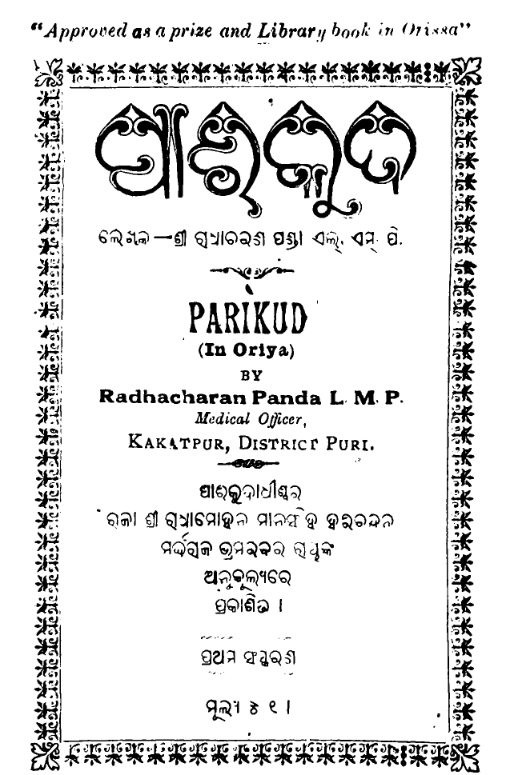Parikuda, authored by Radhacharan Panda and published in 1928, stands as a significant milestone in the realm of Odia literature and historical scholarship. This seminal work transcends mere storytelling, delving into the rich tapestry of Odisha’s past, showcasing the state’s culture, heritage, and societal dynamics. Through this book, Panda not only preserves the memories of a bygone era but also ignites a sense of pride among his readers by celebrating the unique identity of Odisha.
The late 19th and early 20th centuries were times of fervent cultural renaissance in Odisha. Amidst the waves of social reform and nationalistic fervor sweeping across India, “Parikuda” emerges as a piece that encapsulates the zeitgeist of its time. During this period, there was a growing interest in documenting and reviving local histories, often intertwined with folklore, mythology, and lived experiences. Radhacharan Panda’s work, therefore, serves as both a literary and historical artifact, capturing the essence of Odisha’s evolution.
The central theme of Parikuda revolves around the exploration of historical events and characters that have shaped Odisha. Panda skillfully intertwines mythological narratives with historical fact, emphasizing the idea that history is not just a record of dates and events but a living, breathing entity that influences present and future generations. The work likely covers key events, cultural practices, and figures that played crucial roles in the socio-political landscape of Odisha.
Panda’s approach to history is notable for its inclusivity; he celebrates not only kings and warriors but also the common people, artisans, and cultural practitioners who contributed to the state’s rich heritage. This portrayal allows readers to see themselves as part of a continuum of history, fostering a deeper understanding and connection to their identity.
Panda’s linguistic prowess shines through in Parikuda. The book’s language is a beautiful reflection of Odia’s rich literary tradition, characterized by eloquent prose and poetic embellishments. His vivid descriptions and evocative imagery bring historical events to life, making them accessible and engaging for a broad audience. This stylistic choice not only enhances the narrative but also resonates particularly well with readers who may not have formal training in historical studies.
Parikuda has left an indelible mark on Odia literature and historiography. It has inspired subsequent generations of writers, historians, and cultural enthusiasts to delve into Odisha’s past. The book serves as a reminder of the importance of preserving local histories and cultural narratives, especially in a diverse country like India, where regional identities often compete for recognition within a national framework.
Moreover, Radhacharan Panda’s work has significantly contributed to the understanding of Odisha’s history in broader historical discourses, encouraging a more nuanced portrayal that honors the complexity of its social fabric.
Books Info
| Books name | Parikuda / ପାରିକୁଦ |
| Author | Radhacharan Panda |
| No Of pages | 180 |
| Publisher | NA |
| Publication | 1928 |
| Printed At | NA |
| Distributor | NA |

